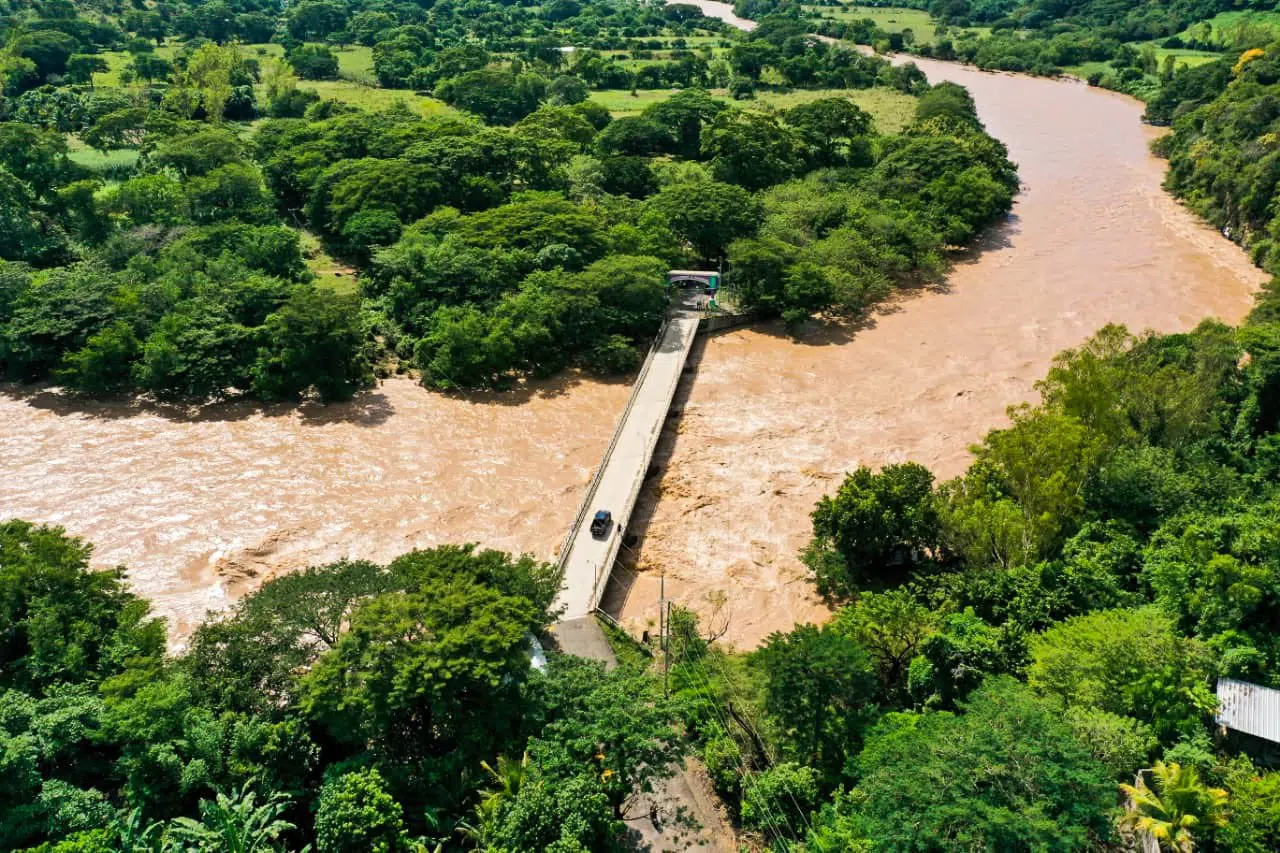In Eastern El Salvador, the livestock industry also reports the loss of cattle due to intense storms. There are no definitive reports yet for basic grain production.
Once again, the constant rains caused damage to vegetable crops in El Paisnal, in San Salvador due to the “rising” of the Lempa River, according to the National Association of Rural Producers of El Salvador (ANPRES), which reports damages to about 240 fields of vegetables.
Carlos Arteaga, president of ANPRES, told LA PRENSA GRÁFICA that the loss was total in the ayote and pipián crops “because as they are lower, that is, closer to the ground level, they were covered with water”.
In the case of corn cultivation, the farmer indicated that although “the rains have weakened a bit, the damage is irreversible”.
Most producers had already sown, some using the irrigation system to take advantage of prices.
“The cornfields were already in the process of forming corn and others were in development. The smaller ones were buried in mud and those that managed to survive would have fungus and bacteria issues”, he said.
But the vegetable sector has not been the only one impacted. Over the weekend, the national coordinator of the Agricultural, Rural and Indigenous Table, Mateo Rendón, reported flooding and livestock deaths in the eastern area due to the rains.
El Salvador has been on red alert since last Sunday due to the intense rains that have impacted the country since Friday at the national level.
Leónides Velázquez, a cattle farmer from San Miguel, confirmed Rendón’s statements, stating that “cattle have been lost due to the rising of the Grande River, although many people do not report it”.
“We still don’t have numbers, but there is lost cattle and others sick from the rains”, he said.
Producers from Ahuachapán, Santo Domingo de Guzmán, and Chalchuapa mentioned that there is no damage reported in corn crops as the plants are small and can still recover.
In Zapotitán, rice producers also said there is no damage; however, they clarified that if the rains continue and the fields are completely flooded, there would be damage.
The Ministry of Environment and Natural Resources (MARN) announced that for this Tuesday, intermitent rains of lesser intensity are expected throughout the country, with emphasis on the volcanic strip and coastal strip of the country.
Lluvias provocan daños en más de 200 manzanas de cultivo de hortalizas por crecida del río Lempa en El Salvador
En el oriente de El Salvador, el sector ganadero también reporta la pérdida de ganado debido a las intensas tormentas. Aún no hay reportes definitivos para la producción de granos básicos.
Una vez más, las constantes lluvias provocaron daños en el cultivo de hortalizas en El Paisnal, en San Salvador por la “crecida” del río Lempa, aseguró la Asociación Nacional de Productores Rurales de El Salvador (ANPRES), la cual reporta daños en cerca de 240 manzanas de hortalizas.
Carlos Arteaga, presidente de ANPRES declaró a LA PRENSA GRÁFICA que la pérdida fue total en el cultivo de ayote y pipián “porque como eso está más bajo, es decir, más cerca del nivel del suelo, entonces se cubrió de agua”.
En el caso del cultivo del maíz, el agricultor indicó que aunque “las lluvias se han debilitado un poco, los daños son irreversibles”.
La mayoría de productores ya había sembrado, algunos usaron el sistema de riego para aprovechar los precios.
“Las milpas estaban ya en proceso de formación de elote y otras estaban en desarrollo. Las pequeñas fueron sepultadas de lodo y las que lograran sobrevivir tendrían afectaciones de hongos y bacterias”, dijo.
Pero el sector de hortalizas no ha sido el único impactado. Este fin de semana, el coordinador nacional de la Mesa Agropecuaria, Rural e Indígena, Mateo Rendón, reportaba la inundación y muerte de ganado en la zona oriental debido a las lluvias.
El Salvador se encuentra en alerta roja desde el pasado domingo por las intensas lluvias que han impactado al país desde el viernes a nivel nacional.
Leónides Velázquez, ganadero de San Miguel, confirmó las declaraciones de Rendón, al exponer que “se ha perdido ganado por la crecida del río Grande, aunque mucha gente no lo reporta”.
“Todavía no tenemos números, pero si hay ganado perdido y otro enfermo por las lluvias”, manifestó.
Productores de Ahuachapán, Santo Domingo de Guzmán y Chalchuapa mencionaron que en los cultivos de maíz no se reportan daños ya que las plantas están pequeñas y aún se pueden recuperar.
En Zapotitán, los productores de arroz también expresaron que no hay daños; sin embargo, aclararon que de seguir las lluvias e inundarse por completo, si los habría.
El Ministerio de Medio Ambiente y Recursos Naturales (MARN) anunció que para este martes se prevé que en el resto del país las lluvias sean intermitentes y de menor intensidad, con énfasis en la franja volcánica y franja costera del país.

